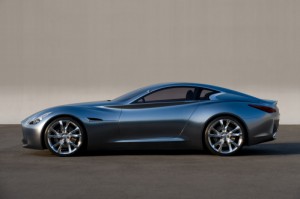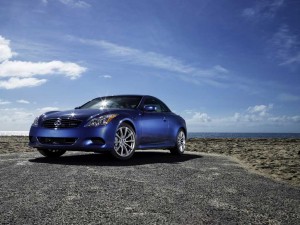
For now, it's just a concept vehicle, but will the well-reviews Infiniti Essence have a role in the Nissan luxury division's global expansion?
They’re studies in contrast; the upscale Japanese marques Lexus and Infiniti launched the same day, at the Detroit Auto Show, 20 years ago, but while one has become a major success story, the other continues to struggle.
But finally, after two decades as the luxury market also-ran, Infiniti is beginning to show some momentum, thanks to a flood of new resources provided by its parent, Nissan Motor Co.
During its first two decades, “They didn’t give Infiniti the attention the luxury brand deserved,” acknowledges Ben Poore, the new vice president and general manager of the Infiniti Business Unit. In fact, a decade ago, Nissan gave serious consideration to pulling the plug on the luxury unit, entirely, though then-new CEO Carlos Ghosn decided to give it a reprive.

The latest addition to the Infiniti line-up, the G37 Convertible, could soon be joined by more.
Like a poor cousin, Nissan’s struggling division had to fight for everything it could get, whether that meant new product or the dollars to market them. Indeed, Poore was originally hired, several years ago, to handle marketing for both Nissan and Infiniti operations, in the U.S., but was reassigned when the Japanese maker decided to finally create a truly standalone operation out of the luxury brand.
That means the new Infiniti Business Unit is handling “everything, top-to-bottom,” according to Poore, from product development to marketing.
The timing is critical, he adds. Though the Nissan unit has long been talking about expanding beyond the core, U.S., Canadian and Puerto Rican markets, it had, until recently, made only a few small forays abroad. But late last year, the executive adds, Nissan began its official global roll-out, entering eight new European markets.
That expansion was supported by a high-profile presence at the Geneva Motor Show, last month, where many observers credited Infiniti with unveiling the event’s most striking concept vehicle, the sporty Essence, (click here to read more), which TheDetroitBureau.com colleague Ken Zino aptly described as a “a simple performance statement in the guise of a 592-horsepower, rear-wheel-drive gasoline/electric hybrid coupe.”
Infiniti’s roll-out will continue for several more years, according to Poore, with aggressive plans to operate in 25 European markets and 11 countries in the Americas by 2011.
Essence only hints at the “breadth and depth” of the product changes in store, suggests Poore. The challenge, he says, during a conversation with TheDetroitBureau.com, is to meet the sometimes conflicting demands of European and American consumers. He spends a significant amount of time dealing with his counterpart, in Europe, as well as the planners now running the autonomous Infiniti operations back in Japan.
But boosting sales, worldwide, will only help Infiniti become more competitive, Poore contends, as bigger sales will justify further investments in the brand. “That’s the absolute benefit of going global,” he says, adding that, “There are significant opportunities to enter new segments of the market.” Just what those are, Poore isn’t saying, but if the rapid expansion of variants off the G-platform – including the coupe and new convertible – are any example, he suggests, the growth of the Infiniti line-up could come quickly.
